
In the tapestry style, Bogaevsky wrote one of his most peculiar landscapes of this time – “Tombs”, subordinating in it certain elements of the Crimean landscape to a strict system of compositional construction and color relations. His imagination takes us to the “unknown country”, where nature is grand and grandiose. Behind the tall, slender silhouettes of the pine foreground is a monolithic mountain mass ending in a pointed pyramidal peak. On the slopes of the mountain here and there are thin pine trees, repeating the shape of the original trees, and the outline of the mountain massif is repeated in a small mountain with the same pyramidal top seen behind it. From these flat peaks rise into the sky vertical candles thin trickles of smoke and merge with clouds.
We learn in a somewhat fantastic landscape “Altars” a familiar outline of slender Crimean pines and a stone silhouette of Mount Tepe-Kermen with its characteristic naked slopes and a flat table top, which is imprinted on one of the artist’s sketches. Stylizing the natural forms in the picture and bringing its color scale to the conceived conditional color, Bogaevsky does not lose his sense of proportion in the interaction of the real and the conditional. But with all the closeness to nature, his landscape is filled with a certain symbolic meaning. The entire sublime romanticism of the landscape expresses the artist’s dream of a beautiful, radiant country where the environment and feelings of man are fused in a harmonious unity, where there is no place for philistine prose of being where everything is sublime and solemn. 1906-1908 were a period, when Bogaevsky was especially fond of the work of Symbolist writers-M. Maeterlinck, A. Bely, V. Ya. Bryusov, A. A. Blok, in the very poetry of which he was attracted by poetic allegories, which signify the manifestation of the feelings and thoughts of man. With symbolists Bogaevsky brought together the appeal in art to the life of the universe.
The achievements of science of that time provided an occasion for thinking about the cosmos, the primordial state of the Earth. The cosmic theme sounded in the poetry of AA Blok, V. Ya. Bryusov, MA Voloshin, in the paintings of LS Bakst, N. K. Roerich, M. K. Čiurlionis, who created remarkable works that evoke the idea of the grandeur of the universe. In the works of Bogayevsky, the sun, the stars, the sky itself and the clouds also served as symbols of the tragedy or joy of nature and expressed the author’s thoughts about the eternal triumph of being. From the memory of contemporaries it follows that he paid much attention to the scientific discoveries of astronomers, he himself liked to observe the starry sky, the motion of the planets. Rylov talks about how they met in St. Petersburg, ” loved to be carried to the star world, to travel from planet to planet “.
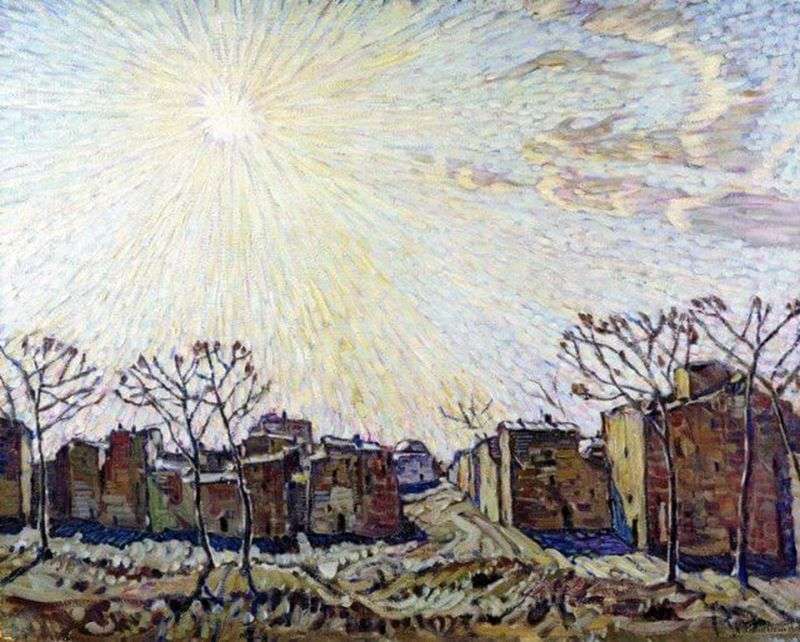 The Sun by Constantine Bogaevsky
The Sun by Constantine Bogaevsky Mountain landscape by Konstantin Bogaevsky
Mountain landscape by Konstantin Bogaevsky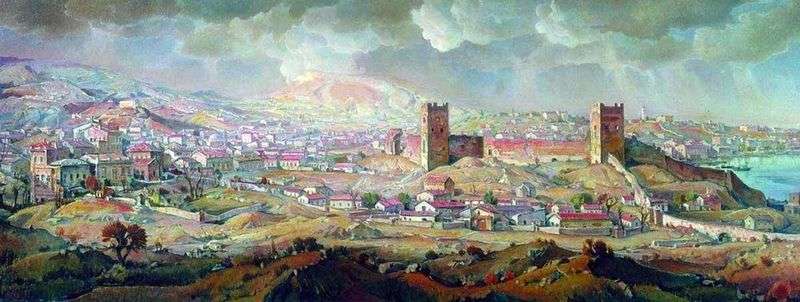 Theodosius by Constantine Bogaevsky
Theodosius by Constantine Bogaevsky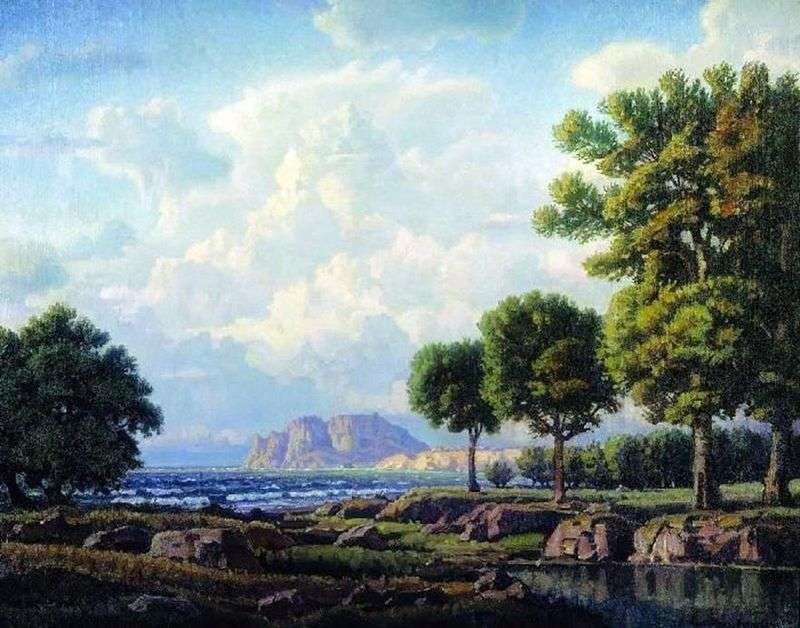 Evening by the Sea by Konstantin Bogaevsky
Evening by the Sea by Konstantin Bogaevsky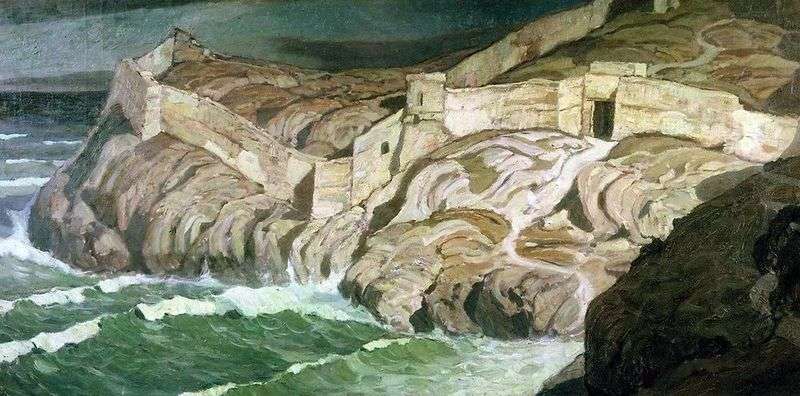 Ancient fortress by Konstantin Bogaevsky
Ancient fortress by Konstantin Bogaevsky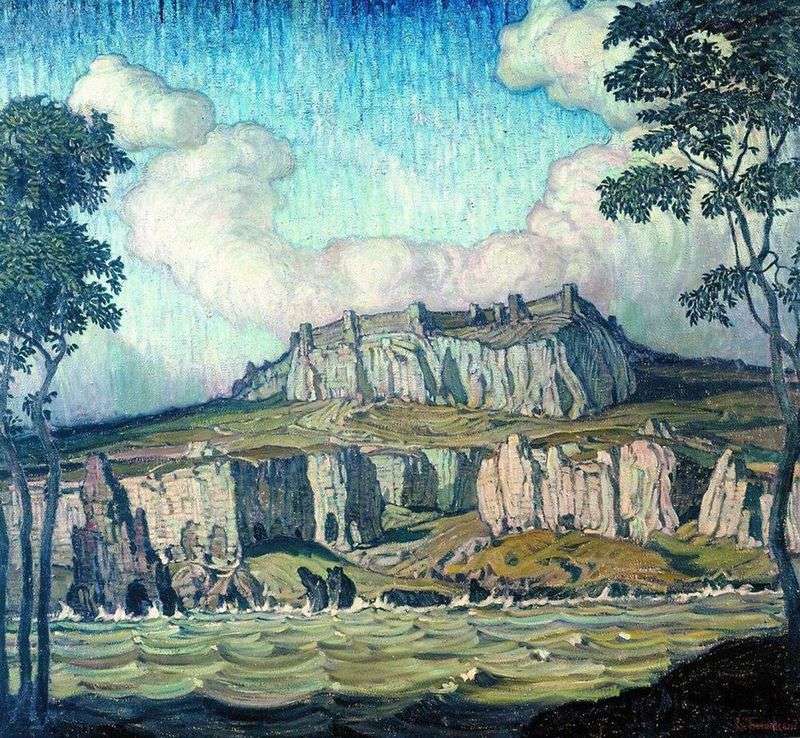 Coast of the sea by Konstantin Bogaevsky
Coast of the sea by Konstantin Bogaevsky In the Crimean Mountains by Fedor Vasilyev
In the Crimean Mountains by Fedor Vasilyev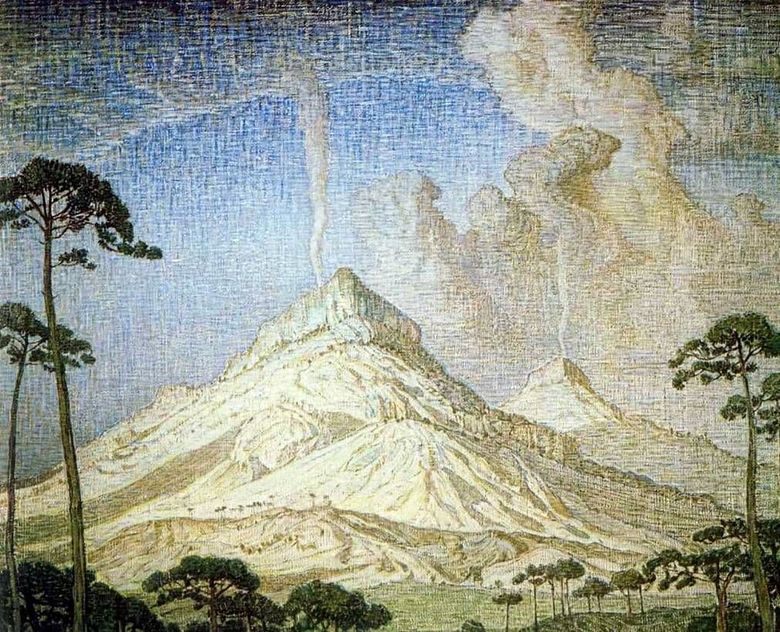 Autels – Konstantin Bogaevsky
Autels – Konstantin Bogaevsky